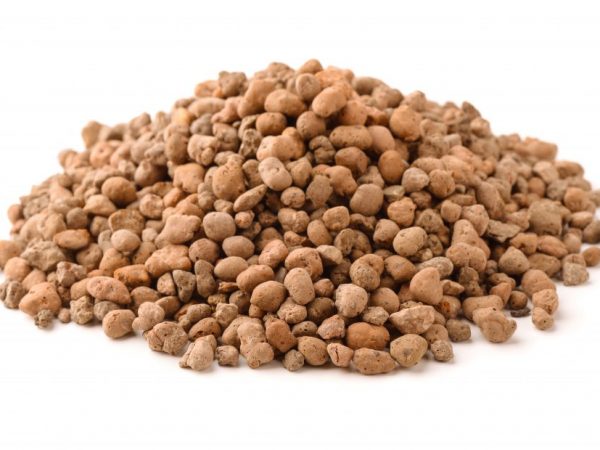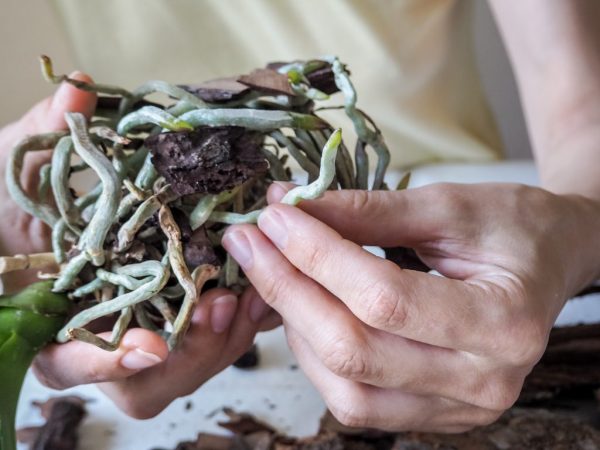How to plant orchids in expanded clay
Florists have introduced into practice an affordable method of growing epiphytic plants in indoor conditions, so orchids in expanded clay are no longer a rarity.

Planting orchids in expanded clay
This method of cultivation has both supporters and opponents. For example, drainage expanded clay is filled with metal salts that are harmful to the roots of a plant, therefore, it is not suitable for use as a substrate.
Which expanded clay is suitable for an orchid
Expanded clay, suitable for planting orchids, is also called Expanded clay substrate. It is prepared according to the method of using environmentally friendly clay, which is baked in an oven.
Granules are obtained with a diameter of 8 to 16 mm. They are washed well before packing.
The products of the Dutch company Plagron Euro pebbles are very popular among people who grow orchids on expanded clay substrate.
The advantages of expanded clay
Expanded clay has the following advantages:
- retains water in all layers and at any depth;
- chemically neutral;
- has excellent breathability;
- does not contain pests;
- leads to infrequent watering, as a result of overflows practically does not happen;
- simplifies maintenance, including soil treatment;
- it is used for a longer time, since it does not rot and does not decompose;
- has a low specific weight.
The use of expanded clay allows less frequent plant transplantation.
Disadvantages of expanded clay
The disadvantages of expanded clay include the following:
- it is not suitable for growing large plants, since it makes the pot heavier;
- it is used for growing orchids in the home, but it is not suitable for greenhouses;
- with a slight roll of the pot, part of the granules spills out;
- in expanded clay, it is difficult to stably fix the supporting support for the orchid.
Orchid in expanded clay looks organic. It is gradually replacing the usual pine bark.
Method of planting orchids in expanded clay
Different orchids are grown in expanded clay:
- Cymbidium;
- Paphiopedilum;
- Cattleya;
- Dendrobium;
- Fragmipedium hybrid;
- Phalaenopsis;
- Wanda.

Damaged roots in expanded clay will recover faster
The resuscitation of plants with affected roots is especially good. For example, Phalaenopsis growing in expanded clay quickly forms new roots that continue to develop well.
A synthetic transparent pot is suitable for planting an orchid. Through its walls, it is easy to monitor the state of the root system at any stage of plant growth and development. Unlike the traditional substrate, when filling the pot with expanded clay, it is not required to make ventilation holes in the bottom, there are enough holes in the walls.
For pots with a volume of 300-500 ml, perforations for draining excess irrigation water should be located in a row at a height of 1 cm from the bottom. The larger the volume of the pot, the higher the holes should be from the bottom. So, in containers with a volume of 500-1000 ml, they should be approximately at a height of 1.5 cm, and if the volume is 1.5-2 liters - 2 cm from the bottom.
A type of orchid like Wanda requires more aeration for the roots, so additional holes are made around the entire circumference of the pot.
The diameter of expanded clay granules is selected, depending on the thickness of the roots. For flowers with thick roots, material with large fractions is selected, and for plants with thin roots, fragments of a small diameter substrate are more suitable.
The best time of the year to plant
Orchids are planted in spring, when the processes of its growth and development are activated. Before planting, the expanded clay granules are soaked in water with phytohormones for 24 hours, after which the liquid is allowed to drain. The roots should be located in the upper layers of the substrate.
Then it remains to apply fertilizers and maintain the required temperature. The height of the water layer is determined by the level of the side holes made in the pot.
Growing features
Sometimes in the process of growing orchids in expanded clay, the granules grow firmly into the roots of the plant. This is not scary, it is permissible to transplant the flower into a larger pot when the time comes, along with adhering particles of the substrate.
Sometimes, with prolonged use of expanded clay substrate, its salinization occurs. To eliminate the problem, it is washed with distilled or running water.
Equally important is the selection of the correct diameter of the holes in the walls of the pot. It should correspond to the size of the flowerpot and the diameter of the granules. If the holes are too small, the orchids will direct root growth upward rather than downward in search of oxygen.
Conclusion
Expanded clay substrate is chosen for both permanent use and for use only during the resuscitation period of orchids with root problems.


